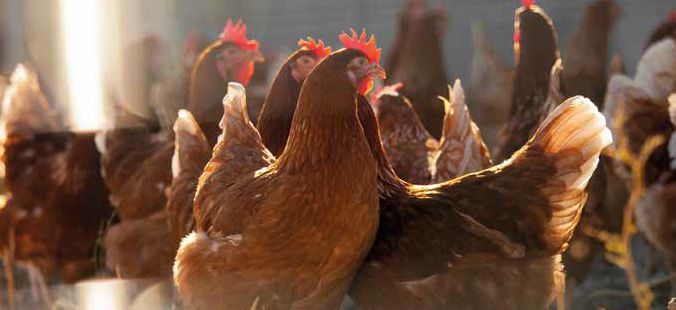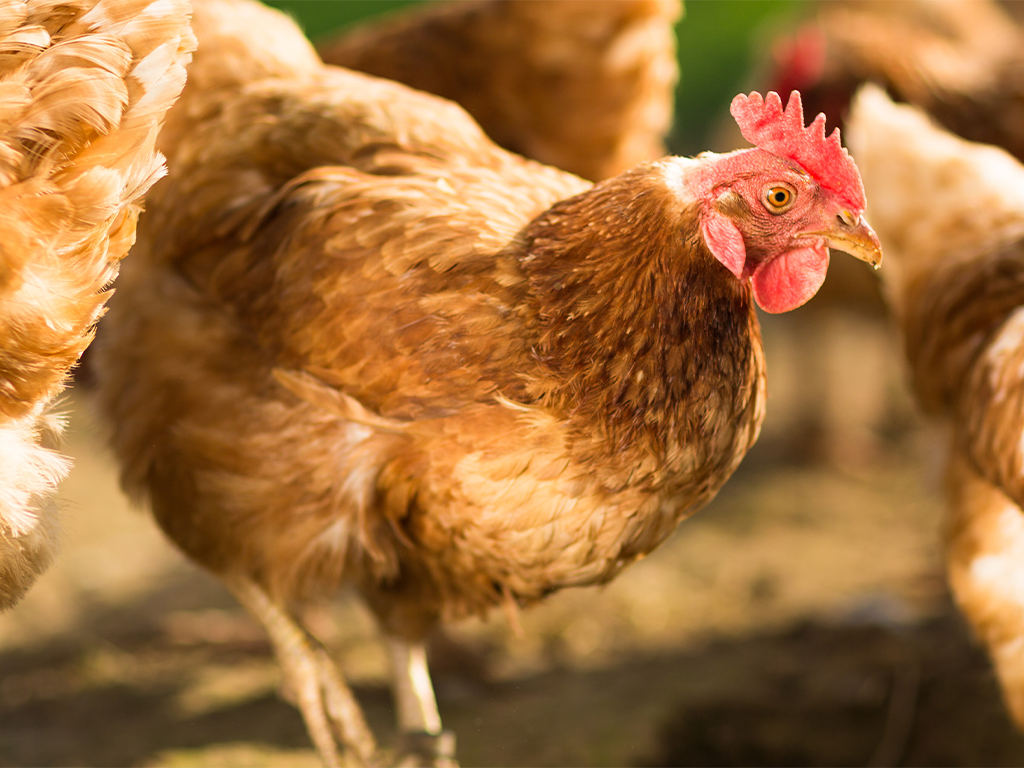In the realm of poultry farming, the specter of Salmonella looms large, posing a significant threat to public health and the poultry industry alike. The pervasive nature of this pathogen, coupled with its potential to cause severe foodborne illnesses, underscores the necessity for robust preventive measures. Among these, vaccination against Salmonella has emerged as a cornerstone strategy. However, the efficacy of vaccination is intricately linked with comprehensive biosecurity measures, forming a symbiotic relationship that is indispensable for effective Salmonella control.
Types of Salmonella Vaccines
Salmonella vaccines are broadly categorized into live attenuated vaccines and killed (inactivated) vaccines. Live attenuated vaccines contain a weakened form of the bacteria, which stimulates a strong immune response without causing disease. These vaccines are known for their ability to induce long-lasting immunity and are often administered orally or through drinking water.
On the other hand, killed vaccines consist of bacteria that have been inactivated by chemicals. Both inactivated and live attenuated vaccines play a critical role in reducing the prevalence of Salmonella in poultry flocks. Boths types of vaccine are complementary in a comprehensive Salmonella program.
Vaccination monitoring is pivotal in ensuring the success of Salmonella vaccination programs. Regular monitoring allows for the assessment of vaccine efficacy, helping to identify any lapses in immunization coverage or the emergence of new Salmonella strains. This proactive approach enables timely interventions, thereby maintaining the health of poultry flocks and safeguarding public health.
Accurate sample collection and testing are essential for verifying the presence of vaccine strains and assessing the overall effectiveness of the vaccination program. Samples to monitor live vaccines are typically collected from cloacal swabs, feces, internal organs or environmental sources within the poultry housing. These samples are then analyzed using either culture method or molecular techniques to differentiate between vaccine strains and wild-type Salmonella. Monitoring live vaccine replication is key to ensure proper bird immunization.
Blood samples are needed for inactivated vaccination monitoring.
Vaccination has already demonstrated to be the ideal measure available to poultry farmers, with a drastic reduction in the prevalence of positive flocks in Europe after its introduction. But vaccination cannot guarantee the safety of poultry products from farm to fork on its own, as contamination with Salmonella spp. may occur upstream (breeder flocks, hatcheries, and feed mills) and downstream (transport and processing plants), so poultry operations biosecurity is also key.
The Role of Biosecurity in Salmonella Control
Biosecurity typically includes a series of measures to address Salmonella-exclusion (avoiding the entrance of pathogens on the farm), Salmonella-management (preventing the spreading of pathogens within a farm), and Salmonella-containment (preventing further dissemination of pathogens from an infected farm). Given the importance of Salmonella in foodborne diseases and the wide range of sources of contamination within the poultry value chain, the poultry sector must adopt a holistic approach towards the control of Salmonella.
 Water Sanitation Programs
Water Sanitation Programs
A water sanitation program using chlorine oxide, ozone, or UV treatment is recommended, along with the thorough cleaning of water lines between flocks as Salmonella can survive in biofilms. Clean and sanitized water sources are critical in preventing the spread of Salmonella within flocks.
Feed Sanitation
Feed sanitation is also critical and must address all contamination risks at the feed mill, during transportation, and on the farm. Proper storage and handling of feed can significantly reduce the risk of Salmonella introduction and spread.
Pest Control
Rodents, flies, mites, and other insects can carry Salmonella and contribute to the contamination of a flock. Monitoring the effectiveness of the pest control program in place is essential. Regular inspections and prompt action to eliminate pests can help in maintaining a Salmonella-free environment.
Wild Birds, People, and Equipment
Wild birds, people, and shared equipment are also common sources of recontamination and will require the implementation of a range of control procedures. Ensuring that all farm personnel follow strict biosecurity protocols, including the use of disinfectants and protective clothing, can minimize the risk of Salmonella transmission. Regular training for farm workers on biosecurity best practices can also help to reduce the risk of Salmonella introduction and spread.
Scientific Insights and Meta-Analysis
Interestingly, a recent meta-analysis identified the hatchery (horizontal transmission) as the most significant contributor of Salmonella, followed by poultry litter, feces, and poultry internal environment factors (rodents, pest, building). This finding emphasizes the critical need for stringent biosecurity measures throughout the poultry value chain, starting from the hatchery.
Holistic Approach to Salmonella Control
The safety of poultry products from farm to fork will only be guaranteed if strict biosecurity is applied throughout the poultry value chain. Biosecurity measures, when combined with vaccination, form a formidable defense against Salmonella. The holistic approach involves continuous monitoring, regular sanitation, and strict adherence to biosecurity protocols to prevent the introduction and spread of Salmonella at every stage of production.
Biosecurity and Vaccination - The Perfect Partnership
In conclusion, while vaccination against Salmonella is a powerful tool in reducing the prevalence of this pathogen in poultry flocks, it cannot act alone. The integration of comprehensive biosecurity measures is essential to ensure the safety and quality of poultry products. By adopting a holistic approach that combines vaccination with rigorous biosecurity protocols, the poultry industry can effectively combat Salmonella, protecting both animal and public health.
Biosecurity is indeed the best ally and essential partner to vaccination against Salmonella, ensuring a safer and healthier future for the poultry industry and consumers alike.
Given the importance of Salmonella in and the wide range of sources of contamination within the Poultry value chain, the Poultry sector must adopt a holistic approach towards the control of Salmonella.
 Vaccination has already demonstrated to be the ideal bio-management measure available to poultry farmers, with a drastic reduction in the prevalence of positive flocks in Europe after its introduction. But vaccination cannot guarantee the safety of poultry products from farm to fork on its own, as contamination with Salmonella spp. may occur upstream (breeder flocks, hatcheries and feedmills) and downstream (transport and processing plants). Re-contamination of Salmonella free flocks is also possible, highlighting the needs for a wide range of measures on farms. A water sanitation program using chlorine oxide, ozone or UV treatment is recommended, along with the thorough cleaning of water lines between flocks as Salmonella can survive in biofilms. Feed sanitation is also critical and must address all contamination risks at feed mill, during transportation and on farm. As rodents, flies, mites and other insects can carry Salmonella and contribute to the contamination of a flock, monitoring of the effectiveness of the pest control program in place is also essential. Wild birds, people and shared equipment are also common sources of recontamination and will require the implementation of a range of control procedures.
Vaccination has already demonstrated to be the ideal bio-management measure available to poultry farmers, with a drastic reduction in the prevalence of positive flocks in Europe after its introduction. But vaccination cannot guarantee the safety of poultry products from farm to fork on its own, as contamination with Salmonella spp. may occur upstream (breeder flocks, hatcheries and feedmills) and downstream (transport and processing plants). Re-contamination of Salmonella free flocks is also possible, highlighting the needs for a wide range of measures on farms. A water sanitation program using chlorine oxide, ozone or UV treatment is recommended, along with the thorough cleaning of water lines between flocks as Salmonella can survive in biofilms. Feed sanitation is also critical and must address all contamination risks at feed mill, during transportation and on farm. As rodents, flies, mites and other insects can carry Salmonella and contribute to the contamination of a flock, monitoring of the effectiveness of the pest control program in place is also essential. Wild birds, people and shared equipment are also common sources of recontamination and will require the implementation of a range of control procedures.
Interestingly, a recent meta-analysis identified the hatchery (horizontal transmission) as the most significant contributor of Salmonella, followed by poultry litter, feces and poultry internal environment factors (rodents, pest, building). Therefore, the safety of consumer poultry products from farm to fork will only be guaranteed if strict biosecurity is applied throughout the poultry value chain. Biosecurity is indeed the best ally and essential partner to vaccination against Salmonella.
Scientific Ref.: A systematic review and meta-analysis of the sources of Salmonella in poultry production (pre-harvest) and their relative contributions to the microbial risk of poultry meat.



